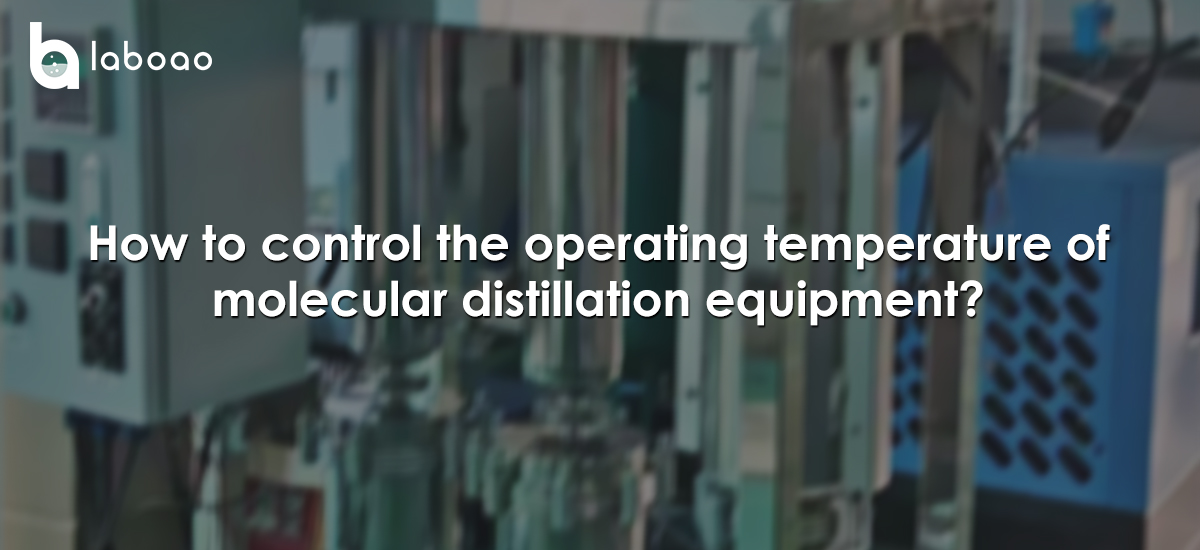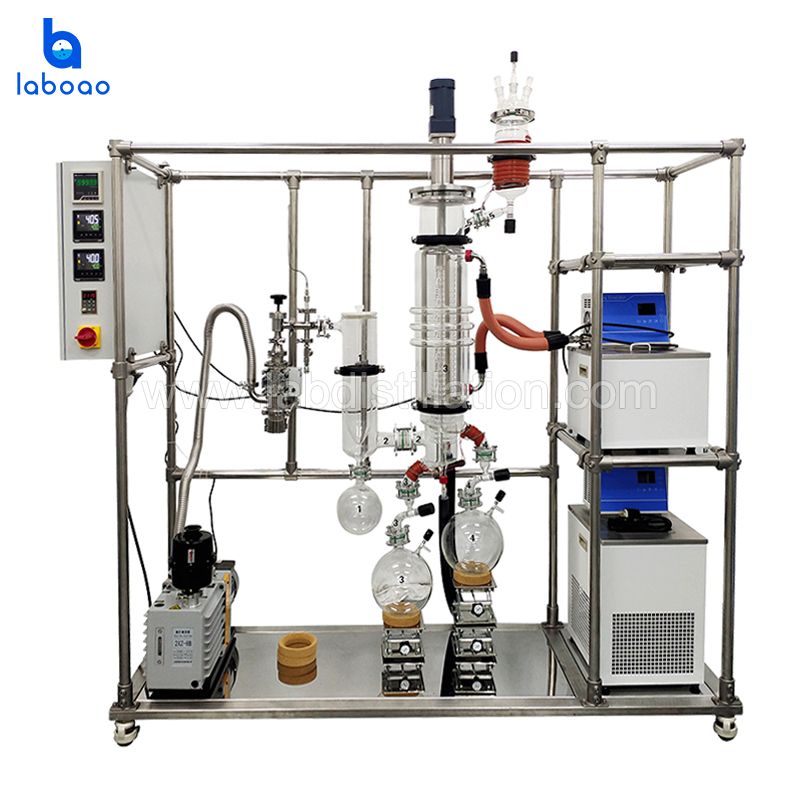
In the molecular distillation system, the determination of evaporation temperature and condensation temperature needs to comprehensively consider the material characteristics, process requirements and equipment performance. The specific methods are as follows:
1. Determination of evaporation temperature
Material properties and separation requirements: The evaporation temperature needs to be set according to the boiling point of the target component and the separation requirements. For example, heat-sensitive substances need to choose a lower temperature (such as 50-150°C) to avoid decomposition. For high-boiling point materials (such as natural spices), the temperature needs to be adjusted in combination with the vacuum degree, usually controlled at 100-300°C.
Influence of vacuum degree: Molecular distillation needs to be operated under high vacuum (10⁻⁵-10⁻³ Pa), at which time the evaporation temperature is significantly lower than the normal pressure boiling point. For example, the boiling point of a natural spice can be reduced to 1/3 of the conventional boiling point at 10⁻³ Pa.
Temperature gradient design: The evaporation surface and the condensation surface need to maintain a temperature difference of 50-100°C to ensure that light molecules cannot return to the evaporation surface and effectively condense. For example, if the condensation temperature is set to -20°C, the evaporation temperature can be set to 50-80°C.
2. Determination of condensation temperature
Cooling medium and efficiency: The condensation temperature is usually 50-100°C lower than the evaporation temperature, depending on the cooling medium (such as cold water, liquid nitrogen). For example, the condensation temperature in an air-cooled system can be 10-15°C higher than the ambient temperature, while the water-cooled system needs to be 3-5°C higher than the cooling water temperature.
Preventing backmixing and energy consumption balance: Too low condensation temperature may lead to increased energy consumption, which needs to be optimized through experiments. For example, a process sets the condensation temperature to -50°C to separate high-boiling components while avoiding ice formation in the cold trap.
3. Coordinated control of operating parameters
Vacuum degree and temperature linkage: For every 10-fold increase in vacuum degree, the evaporation temperature can be reduced by about 30%.
Matching feed rate and temperature: If the feed is too fast, the evaporation temperature needs to be increased to ensure separation efficiency, but the heavy components need to be avoided.
Real-time monitoring and feedback: Dynamically adjust the temperature parameters by online monitoring of evaporation rate (such as 10 m/s) and collection efficiency (>90%).
IV. Typical application examples
Purification of natural flavors: evaporation temperature 120-180°C, condensation temperature -20°C, vacuum degree 10⁻³ Pa.
Recovery of high boiling point solvents: evaporation temperature 250-300°C, condensation temperature -50°C, vacuum degree 10⁻⁵ Pa.
In summary, the evaporation temperature and condensation temperature need to be determined comprehensively based on material properties, vacuum conditions and equipment performance, and efficient separation can be achieved through experimental optimization.
